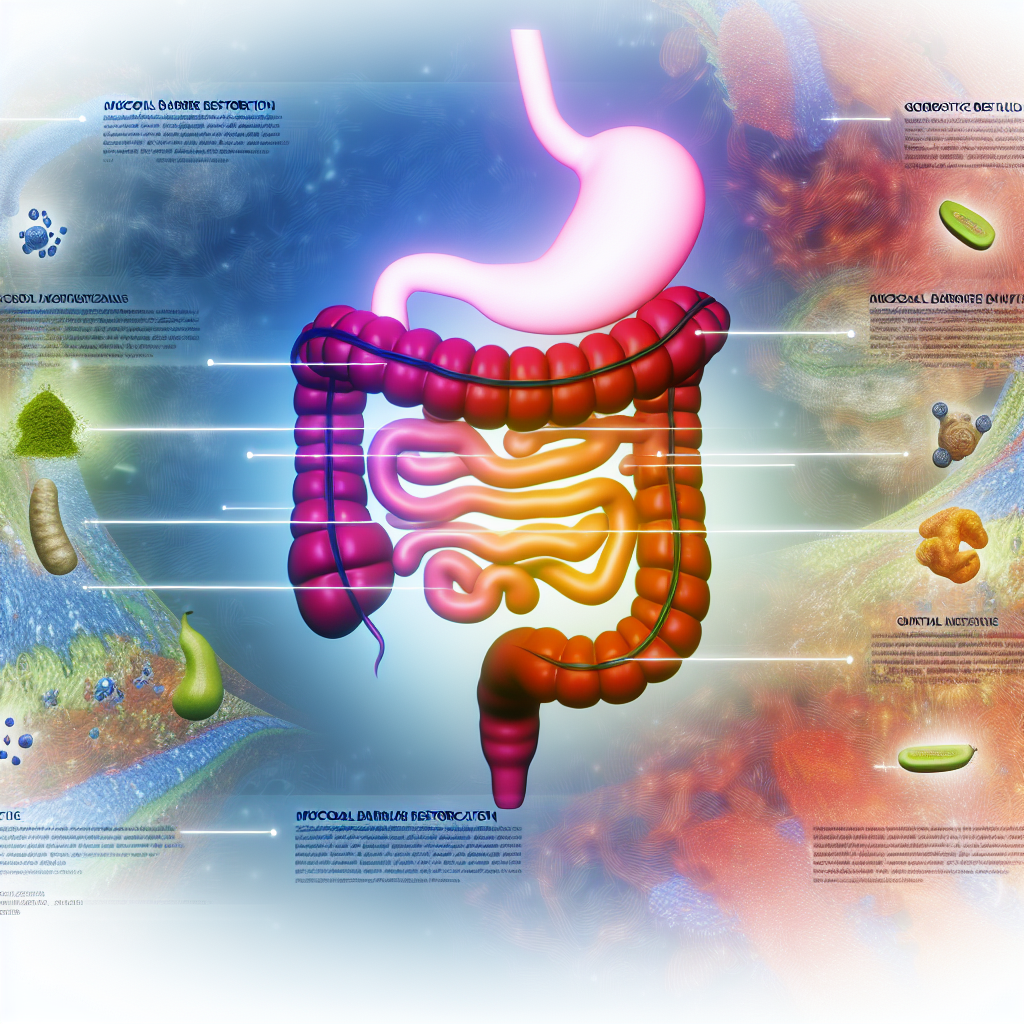How to Reintroduce Foods After an Elimination Diet Without Gut Disruption
Introduction: Why the Reintroduction Phase is More Important Than You Think
An elimination diet is a purposeful and often necessary nutritional strategy used to identify food intolerances, allergies, or sensitivities that may be triggering a range of unpleasant symptoms—from bloating and abdominal pain to eczema, fatigue, and even mood disturbances. This approach involves removing potentially problematic foods for a set period (usually 2–6 weeks) and then systematically reintroducing them one at a time to monitor how your body reacts. When done correctly, it can be a powerful tool in improving overall gut health, reducing inflammation, and gaining a personalized understanding of how your digestive system operates.
However, while elimination diets provide valuable insight, reintroducing foods after such a restrictive plan can be just as crucial—if not more—than the elimination phase itself. Returning too quickly to a varied diet or reintroducing the wrong foods at the wrong time can overwhelm a system that has been in a reset state, causing renewed discomfort or gut disruption.
The gut microbiome, composed of trillions of bacteria, fungi, and other microorganisms, plays a central role in digestion, nutrient absorption, and immune function. Major shifts in diet—such as the removal and subsequent reintroduction of food groups—can influence the balance of this microbial community. Therefore, reintroducing foods must be approached with care, patience, and a structured plan that respects the delicate ecosystem of the gastrointestinal tract.
Many people also turn to natural remedies during this process. Herbal treatments like ginger, slippery elm, and chamomile, along with probiotics and prebiotics, can support gut healing and ease the transition back to a more diverse diet. Where conventional medicine often focuses on symptom management, the integrative approach—including the use of botanicals and food-as-medicine philosophies—can restore long-term gut balance and resilience.
In this article, we will explore a science-backed, step-by-step guide to reintroducing foods after an elimination diet, while minimizing the risk of gut disruption. We’ll also dive into natural remedies and herbal support strategies proven to assist digestion and rebalance the gut microbiome throughout this critical phase.
The Scientific & Medical Foundation Behind Food Reintroduction
The reintroduction phase of an elimination diet is a scientifically recognized strategy in both functional and integrative medicine. According to a publication in the journal Nutrients, elimination diets can be beneficial in conditions such as Irritable Bowel Syndrome (IBS), Inflammatory Bowel Disease (IBD), food sensitivities, and even autoimmune disorders like celiac disease and Hashimoto’s thyroiditis.
However, the ultimate success of this therapeutic approach depends on the structured reintroduction of individual food items or food groups. Experts at the Institute for Functional Medicine recommend introducing one food at a time, every 3 days, while carefully observing the body’s response. This method allows you to pinpoint which foods provoke reactions without overwhelming the intestinal system that may still be in a state of healing.
One crucial aspect of the reintroduction process is the role of the intestinal barrier, commonly referred to as the “gut lining.” As described in Frontiers in Immunology, heightened intestinal permeability (aka “leaky gut”) is associated with food sensitivities and systemic inflammation. The diet phase helps reduce this inflammation, but reintroducing trigger foods can reverse that progress if not done carefully.
Additionally, the gut microbiome—often altered in people with chronic digestive symptoms—needs time to readjust after restriction phases. Certain bacteria flourish or diminish depending on what you eat. A 2014 study in Nature found that microbiota composition can shift within just days of dietary changes, highlighting how dynamic and sensitive the gut ecosystem truly is.
Step-by-Step: How to Safely Reintroduce Foods Without Gut Disruption
To ensure a smooth transition back to a more diverse diet, follow this careful, step-by-step reintroduction process:
1. Keep a Food and Symptom Journal
Record the food you reintroduce, the amount, and any symptoms within 24–72 hours.
2. Reintroduce One Food at a Time
Choose a single item—such as dairy, eggs, or gluten—and eat a small portion on Day 1, then a normal portion on Day 2. Skip Day 3 and observe.
3. Wait 3 Days Before Trying Another Food
Give your body time to react before moving forward. This ensures any response is attributed accurately.
4. Start With the Least Problematic Foods
Begin with items less likely to provoke symptoms or that you strongly suspect are not triggers.
5. Pause If Symptoms Arise
Take several days to let your body stabilize before trying a new food again.
Herbal Helpers: Natural Remedies to Support Reintroduction Phase
Alongside food tracking and timing, incorporating natural remedies can soothe your gut and reduce discomfort:
– Ginger: Well-known for its anti-nausea and digestive support properties, ginger promotes motility and eases food transitions (Food Science & Nutrition, 2018).
– Slippery Elm: A mucilaginous herb that coats the digestive tract, reducing irritation and supporting intestinal integrity.
– Chamomile: This gentle botanical relaxes muscles of the gut lining and has anti-inflammatory effects—particularly beneficial for IBS sufferers.
– Probiotics and Prebiotics: Restore microbial diversity and help recalibrate your gut environment post-elimination.
Final Thoughts: Let Reintroduction Be Your Gateway to Gut Resilience
Successfully reintroducing foods after an elimination diet is not just a matter of resuming your old eating habits; it’s a vital process that requires attention, patience, and personal biofeedback cues. The gut thrives on stability, diversity, and balance. Rushing the reintroduction phase increases the likelihood of symptom flare-ups, inflammation, and a setback in your healing journey.
Using a strategic, science-backed method paired with natural herbal remedies can ease you back into a fuller diet while protecting your gut integrity. Start slow, listen closely to your body, and embrace the supportive power of natural therapeutics. With the right approach, your gut can emerge stronger, more tolerant, and more resilient than ever.
Let the reintroduction phase serve not as a regression, but as a transformational step onward to optimal health and well-being.
**Summary:**
This comprehensive article provides a step-by-step guide to safely reintroducing foods after an elimination diet. It explains the scientific rationale behind the reintroduction process, highlighting the importance of protecting gut health and the delicate gut microbiome. The article also recommends natural herbal remedies like ginger, slippery elm, and chamomile to support digestion and ease the transition back to a more diverse diet. By following a structured, patient-centered approach, readers can successfully reintroduce foods without triggering gut disruption or inflammation.
**References:**
– [Nutrients (2020)](https://www.ncbi.nlm.nih.gov/pmc/articles/PMC7230802/)
– [Frontiers in Immunology (2017)](https://www.frontiersin.org/articles/10.3389/fimmu.2017.01936/full)
– [Nature (2014)](https://www.nature.com/articles/nature12820)
– [Ginger & Digestive Health, Food Science & Nutrition (2018)](https://www.ncbi.nlm.nih.gov/pmc/articles/PMC6341159/)
– [Institute for Functional Medicine Elimination Protocol](https://www.ifm.org/news-insights/elimination-diet-food-reintroductions/)

Dominic E. is a passionate filmmaker navigating the exciting intersection of art and science. By day, he delves into the complexities of the human body as a full-time medical writer, meticulously translating intricate medical concepts into accessible and engaging narratives. By night, he explores the boundless realm of cinematic storytelling, crafting narratives that evoke emotion and challenge perspectives.
Film Student and Full-time Medical Writer for ContentVendor.com




